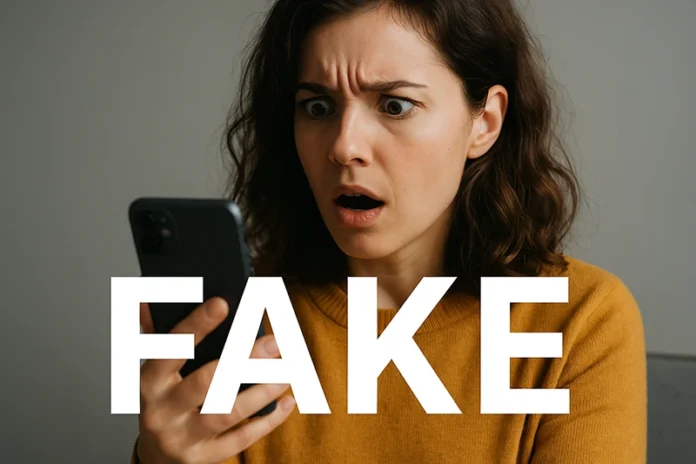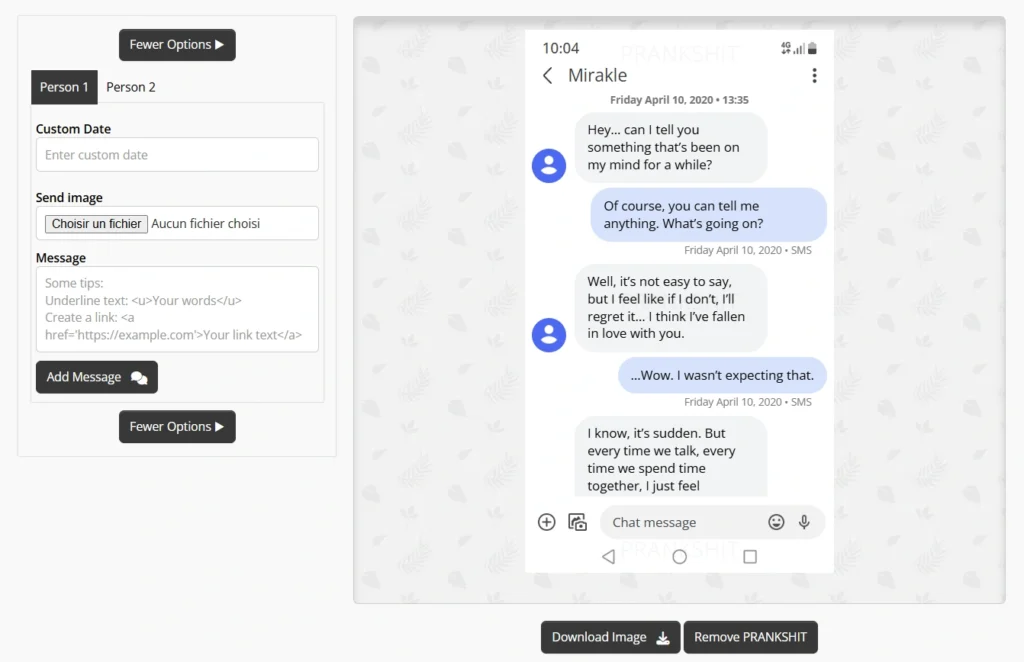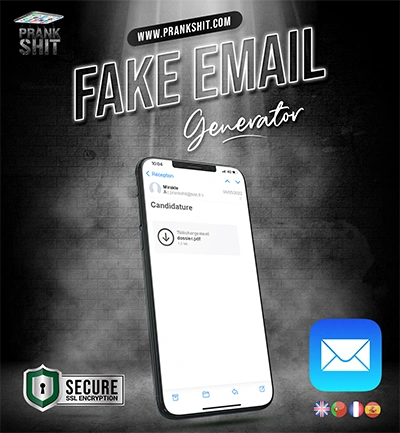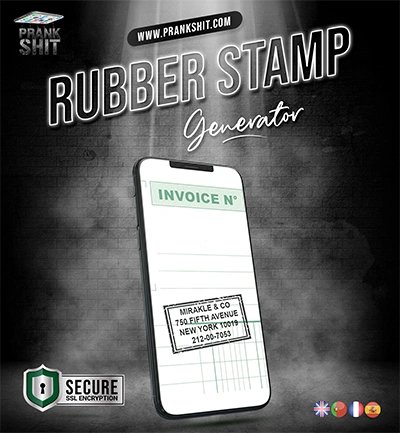Text message scams are no longer a rare annoyance — they’ve become one of the most widespread digital threats in the world. According to the Federal Trade Commission, Americans alone lost over $330 million to text-based fraud in 2022, a number that continues to rise year after year. The most troubling part? Many of these scams are so convincing that even seasoned cybersecurity professionals can fall for them. Fraudsters now impersonate everything from your bank and delivery companies to government agencies and even close friends.
But in 2025, how to identify a fake text message has become more complicated than ever. The rise of advanced fake message generators — like those found on Prankshit.com — allows anyone to recreate ultra-realistic SMS or iMessage screenshots in just seconds. These tools perfectly imitate the layout, fonts, timestamps, battery indicators, and even message styles of real messaging platforms. That means a single screenshot is no longer reliable proof of authenticity.
These generators are not just fun tools for harmless pranks — they can also be misused to deceive, scam, or manipulate. A scammer can create a fake conversation showing confirmation codes, payment approvals, or personal dialogues that never existed. This makes visual verification almost impossible without further context.
How to Identify a Fake Text Message: That’s why this guide is essential — we’ll walk you through the key red flags that expose fake text messages, from subtle formatting errors to suspicious sender behavior. We’ll also explain why you should never fully trust a screenshot, and provide actionable solutions for confirming a message’s authenticity.
For example, if someone sends you a suspicious message screenshot, ask for a screen recording showing them navigating from their home screen into the messaging app — in real-time. This simple step can often reveal whether the conversation actually exists or was manufactured using a fake message generator.
Unfortunately, no method is 100% foolproof — especially when tools like Prankshit.com make it possible to fabricate messages that look indistinguishable from real ones. But with awareness, skepticism, and the right verification habits, you can stay one step ahead of scammers and protect your personal data, financial accounts, and digital reputation.
Let’s dive into the warning signs and best practices that will help you understand how to identify a fake text message and spot the difference between real communication and digital deception.
Common Signs of a Fake Text Message
Recognizing common signs of a fake text message requires attention to several key indicators that scammers often overlook when crafting deceptive SMS scams. Understanding these red flags can help you quickly distinguish between legitimate communication and fraudulent attempts.
Suspicious Grammar and Spelling
Legitimate businesses employ professional writers and proofreaders for customer communications. Phishing messages frequently contain obvious grammatical errors, awkward phrasing, or unusual word choices that native speakers wouldn’t make.
Banks, for example, never send messages saying “Your account has been temporary suspended.” The correct phrasing would be “temporarily suspended.” These subtle language mistakes reveal the message’s fraudulent nature.
However, scammers have improved their writing quality significantly. Some spoofed text messages now match the grammatical standards of legitimate companies, making this indicator less reliable than before.
Urgent Requests for Personal Information
Authentic companies rarely request sensitive information through text messages. Banks don’t ask for passwords, social security numbers, or account details via SMS. When you receive urgent demands for personal data, especially with tight deadlines, treat them as text message scam attempts.
Common fraudulent phrases include:
- “Verify your account within 24 hours or it will be closed”
- “Your payment failed. Update your credit card immediately”
- “Suspicious activity detected. Confirm your identity now”
Legitimate institutions provide multiple ways to resolve account issues and never create artificial urgency around sensitive information requests.
Suspicious or Shortened Links in Fake Text Messages
One of the common signs of a fake text message is the presence of suspicious or shortened links. Scammers often use services like bit.ly or tinyurl to disguise malicious websites. These shortened URLs hide the real destination, preventing you from knowing where the link actually leads before clicking. Legitimate businesses, on the other hand, typically use their official branded domains in customer communications.
Be especially cautious with links that appear to come from well-known companies but use unfamiliar or slightly altered domains. For example, a genuine Amazon message will always link to amazon.com, not to suspicious variations like amazn-security.net.
Some sophisticated phishing attempts even register domains that look nearly identical to legitimate sites. Always double-check spelling and domain extensions before clicking any link in a text message.
Unknown or Inconsistent Sender Information
Another warning sign is inconsistent sender details. Real businesses usually send texts from recognizable short codes or official numbers. If you receive bank alerts from random 10-digit numbers, consider it a red flag.
Modern SMS spoofing makes this trickier, since scammers can manipulate caller ID to display trusted names like Bank of America. Even if the sender name looks familiar, don’t assume it’s legitimate without further verification.
Manipulative Emotional Tone
Scammers also exploit emotions like fear, urgency, or excitement to push you into acting without thinking. Messages threatening immediate account closure, claiming you’ve won contests you never entered, or demanding instant action are classic examples.
How to identify fake message using tone analysis: authentic companies keep their communication professional and neutral. They avoid excessive exclamation marks, ALL CAPS, or emotionally charged wording meant to provoke panic or quick reactions.
Missing Conversation Context
Fake messages often arrive without prior conversation history. If someone claims to be continuing a discussion you never started, or references events you don’t remember, verify their identity through alternative communication channels.
This indicator proves especially useful for personal relationship scams where fraudsters impersonate friends or family members requesting money or sensitive information.
Why You Can’t Always Trust a Screenshot
The digital age has brought sophisticated tools that make visual verification unreliable. Professional-grade fake screenshot generators can create convincing evidence of conversations that never occurred.
The Rise of Advanced Generator Tools
Platforms like Prankshit.com demonstrate how realistic fake screenshots have become. These generators replicate exact interface designs, fonts, colors, and layouts from popular messaging apps including iPhone Messages, WhatsApp, Instagram, and countless others.
The attention to detail in modern generators includes accurate timestamp formatting, proper message bubble alignment, battery percentage displays, and even carrier signal indicators. Every visual element matches authentic interfaces so precisely that experts struggle to identify fabricated content.
These tools require no technical expertise. Users simply enter desired message content, select interface options, and download professional-quality fake screenshots within seconds. The accessibility of such technology means anyone can create convincing fake evidence.
Why Visual Inspection Fails
Traditional methods for detecting manipulated images don’t work with generator-created content. These tools don’t use photo editing software like Photoshop, so they leave no digital artifacts that forensic analysis typically identifies.
The generators create fresh images using code, not by modifying existing screenshots. This process eliminates compression artifacts, layer information, or editing traces that cybersecurity professionals look for when investigating suspicious images.
Even examining pixel-level details provides no reliable indicators of manipulation. The generators use authentic fonts, spacing, and color values extracted from real applications, making the final output indistinguishable from legitimate screenshots.
Professional Deception Capabilities
Advanced generators offer customization options that enhance believability. Users can adjust battery levels, network signal strength, time stamps, and even notification badges to create contextually appropriate fake conversations.
Some platforms provide multiple interface variations for the same application, accounting for different iOS versions, Android skins, or regional differences in messaging app appearances. This versatility allows creators to match specific device configurations their targets would recognize.
The combination of visual perfection and contextual accuracy makes generator-created screenshots virtually undetectable through traditional visual analysis methods.
The Only Way to Verify a Screenshot: Ask for a Screen Recording
When someone shares a suspicious screenshot, request live verification through screen recording. This method provides the only reliable way to confirm message authenticity in the modern digital landscape.
Step-by-Step Verification Process
Proper screen recording verification follows a specific protocol that prevents manipulation:
Starting from the home screen: The person must begin recording from their device’s home screen or lock screen, showing the current time and date. This establishes the recording’s authenticity and timeline.
Navigating naturally: They should open the messaging application naturally, without jumping directly to the conversation in question. This navigation demonstrates the message exists within the app’s normal interface.
Showing conversation context: The recording should display the complete conversation thread, including message history before and after the disputed content. This context reveals whether the message fits naturally within ongoing communication.
Demonstrating interaction: Ask them to scroll through the conversation, open message details, or perform other natural interactions that would be impossible with static fake screenshots.
Technical Verification Elements
Screen recordings reveal several elements that fake screenshots cannot replicate:
Real-time interface behavior: Authentic messaging apps display subtle animations, loading indicators, and responsive elements that static generators cannot reproduce.
System integration: Legitimate messages show proper integration with the device’s notification system, contact database, and other system-level features.
Network connectivity: Real conversations often show message delivery indicators, read receipts, or typing indicators that demonstrate active communication.
Handling Verification Refusal
If someone refuses to provide screen recording verification for suspicious screenshots, treat their claims with extreme skepticism. Legitimate message screenshots require no special protection that would prevent live demonstration.
Common excuses include claims about privacy concerns, technical difficulties, or time constraints. While these might occasionally represent genuine obstacles, they more often indicate attempted deception using fake generated content.
Be Aware: Even Professionals Get Tricked
Cybersecurity experts, law enforcement professionals, and digital forensics specialists have fallen victim to sophisticated fake message campaigns. The rapid advancement of generator technology has outpaced traditional detection methods.
The Professional Challenge
Security professionals trained to identify digital manipulation face unique challenges with modern fake message generators. Their expertise in detecting traditional photo editing doesn’t apply to code-generated content that leaves no conventional traces.
The psychological factor also plays a role. Professionals might feel overconfident in their ability to spot fakes, making them less likely to seek additional verification when presented with convincing fake evidence.
Learning from Expert Mistakes
Recent cases demonstrate how even seasoned investigators have accepted fake screenshots as evidence before discovering their fraudulent nature. These incidents highlight the importance of verification protocols regardless of personal expertise levels.
The evolution of deception tools requires updating professional practices and educational programs to address new technological capabilities that traditional training didn’t anticipate.
Tips to Protect Yourself from Fake Texts
Implementing comprehensive protection strategies defends against increasingly sophisticated text message fraud attempts.
Never Click Suspicious Links
Treat every unexpected link with suspicion, especially those claiming urgent action requirements. When legitimate companies need your attention, they provide multiple contact methods and don’t rely solely on text message links.
Before clicking any link, verify its destination by contacting the supposed sender through official channels. Banks, retailers, and service providers maintain customer service lines specifically for fraud verification.
Enable Two-Factor Authentication
Two-factor authentication (2FA) provides crucial protection even if scammers obtain your login credentials through fake message campaigns. This security layer requires additional verification steps that fraudsters cannot easily bypass.
Activate 2FA on all financial accounts, email services, social media platforms, and any service containing personal information. The minor inconvenience pays enormous dividends in security protection.
Never Respond to Suspicious Messages
Responding to fake messages confirms your phone number’s validity and often triggers additional scam attempts. Scammers sell verified phone numbers to other fraudsters, increasing your exposure to future attacks.
Delete suspicious messages immediately without engaging. If the message claims to address legitimate concerns, contact the organization directly through official channels rather than responding to the text.
Use Secure Messaging Applications
Consider migrating important conversations to applications with enhanced security features. Signal, WhatsApp, and other encrypted messaging platforms provide better protection against interception and spoofing than traditional SMS.
These applications often include features like disappearing messages, screenshot notifications, and enhanced sender verification that make fake message creation more difficult.
Contact Organizations Directly
When receiving unexpected messages from businesses or financial institutions, verify their authenticity through independent contact methods. Call the customer service number printed on your credit card or visit the official website directly.
Don’t use contact information provided in suspicious messages, as scammers often include fake phone numbers that connect to accomplices posing as customer service representatives.
Stay Informed About Current Scams
Scammer tactics evolve constantly, with new approaches emerging regularly. Follow cybersecurity news sources, government fraud alerts, and financial institution security updates to stay informed about emerging threats.
The Federal Trade Commission, FBI, and major banks regularly publish warnings about current scam campaigns. Staying informed helps you recognize new attack patterns before falling victim.
Frequently Asked Questions
How can I tell if a text message is really from my bank?
Banks typically send messages from consistent short codes (like 5-digit numbers) and include specific account identifiers you recognize. They never request passwords, PINs, or full account numbers through text. When in doubt, call your bank directly using the number on your debit card.
What should I do if I clicked a link in a fake text message?
Immediately disconnect from the internet and run a security scan on your device. Change passwords for any accounts you may have accessed recently, especially financial accounts. Monitor your bank statements closely for unauthorized transactions and consider placing fraud alerts on your credit reports.
Can scammers really make text messages appear to come from trusted contacts?
Yes, SMS spoofing technology allows scammers to fake sender information, making messages appear to come from friends, family, or legitimate businesses. Always verify suspicious requests through alternative communication methods, even when they appear to come from known contacts.
Are there apps that can detect fake text messages automatically?
While some security apps claim to detect spam messages, they’re not reliable for identifying sophisticated fake messages created with modern generators. The most effective protection combines manual verification techniques with healthy skepticism about unexpected requests.
How do fake message generators create such realistic screenshots?
Advanced generators like those found on Prankshit.com use actual interface code and design elements from real messaging applications. They don’t edit existing photos but create fresh images using authentic fonts, colors, and layouts, making detection through traditional means nearly impossible.
Should I report fake text messages to authorities?
Yes, forward suspicious messages to 7726 (SPAM) to help carriers identify and block similar messages. You can also report text message scams to the FTC at ReportFraud.ftc.gov. Reporting helps protect others from similar attacks.
Stay Vigilant in the Digital Age
The sophistication of modern text message scams demands constant vigilance and updated protection strategies. Traditional detection methods prove insufficient against advanced generator tools that create pixel-perfect fake screenshots indistinguishable from authentic messages.
Screen recording verification provides the most reliable method for confirming suspicious message screenshots, while comprehensive security practices protect against various attack vectors. Remember that even cybersecurity professionals fall victim to sophisticated deceptions, making verification protocols essential regardless of personal expertise.
The landscape of digital deception continues evolving, with new tools and techniques emerging regularly. Staying informed about current threats, maintaining healthy skepticism about unexpected messages, and implementing strong security practices provides your best defense against increasingly sophisticated text message fraud.
Trust your instincts when something feels suspicious, verify claims through independent channels, and remember that legitimate organizations never create artificial urgency around sensitive information requests. Your awareness and caution remain the most powerful tools against text message scams.





